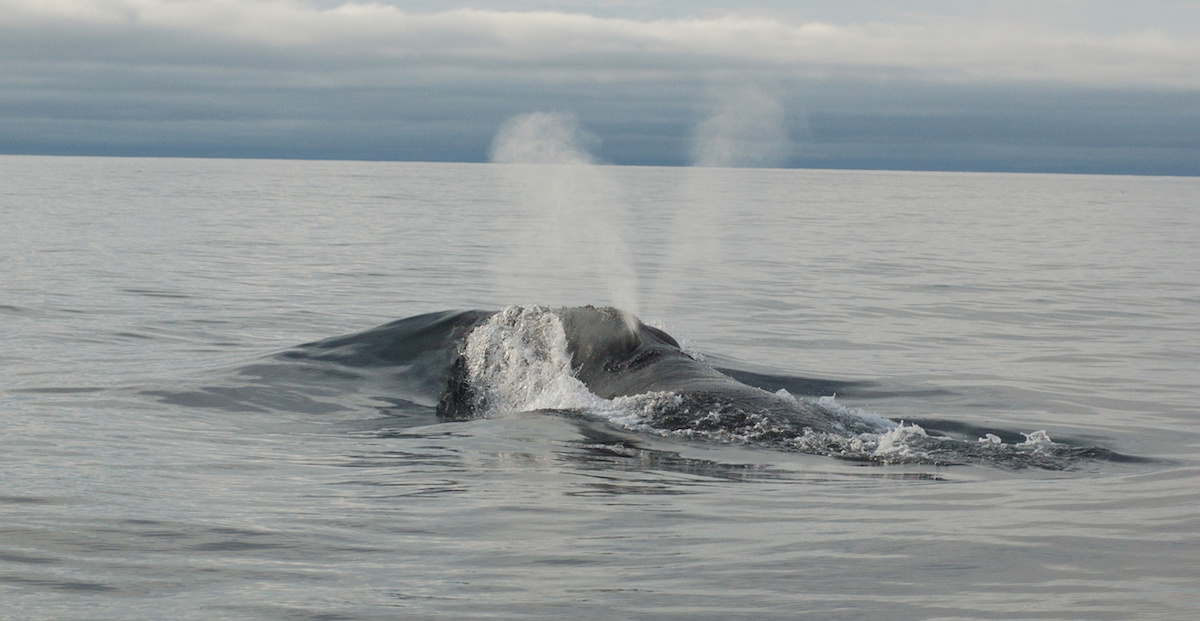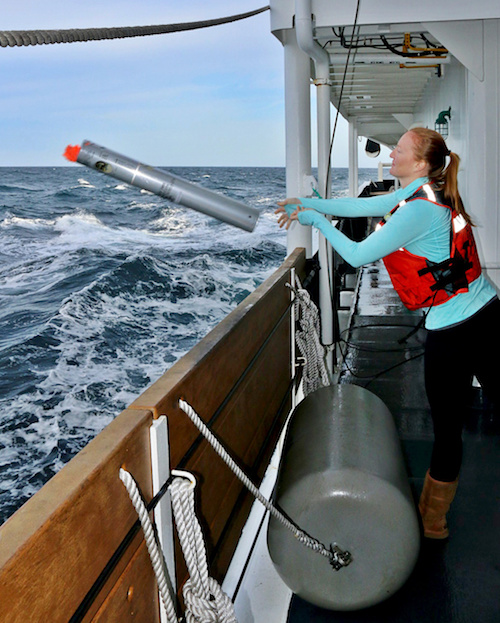First-ever recorded right whale songs come from tiny population swimming in Bering Sea

For years, scientists trying to track the elusive Eastern North Pacific right whale have had to listen with special underwater acoustic devices for the animals’ distinctive “gunshot” calls. Actually seeing any whales from this population — the world’s most critically endangered population of large whales — was an extremely rare occurrence.
Now scientists have evidence that these rare whales are making more elaborate calls than those occasional bursts; they are combining their gunshot sounds into various patterns that are repeated (in this recording, a faint growling sound can be heard at the beginning, followed by a progression of calls). To marine biologists, that is considered a whale song. And now, for the first time, according to the National Oceanic and Atmospheric Administration, scientists have recorded songs from right whales, and those songs come specifically from the smallest population of that species, sung by a whale or whales swimming in the southern Bering Sea off Alaska.
The songs, all from males, are believed to be appeals to the rest of the tiny population for a mate, according to Jessica Crance, a marine mammal biologist with NOAA’s Alaska Fisheries Science Center.
“Right now, we’re hypothesizing that this is some form of reproductive display, perhaps and advertising display,” she said.
[U.S. biologists probe deaths of 70 emaciated gray whales]
NOAA estimates that there are only about 30 Eastern North Pacific right whales. This population swimming off Alaska is overwhelmingly male, by a 2-to-1 or 3-to-1 margin, Crance said.
Getting the songs recorded and analyzed took several years.
The first time scientists heard a right whale song was during a research cruise in 2010, but the fog was heavy at the time and there was no way to see which whale was singing. “At the time, we weren’t able to officially link it to right whales,” Crance said.
Three years later, when they were analyzing an archive of underwater noises, they recognized patterns, which marine mammal biologists consider songs. Then in 2017, they heard the song and saw who was producing it: an individual male they could identify using an archive of photographs.

Details of the recordings, how they were captured and why they are significant are described in a paper published in the current issue of the Journal of the Acoustical Society of America. The study found four distinct types of right-whale songs during eight years of monitoring, all, it appears, done by males.
Although they are classified as songs, the calls are not the familiar melodic sounds produced by humpback whales, Crance said. Instead, what right whales are producing are more like percussion pieces: a single pitch, but a pattern that is repeated.
And if the point of the males’ singing is to attract females for reproduction, scientists and whale lovers want the same outcome, with whale calves resulting.
“There is very much a fear that they are functionally extinct. Is the population so low that they can’t recover?” Crance said.
[Alaska Native whalers celebrate recent gains for Indigenous whaling at IWC]
Indeed, a 2012 study concluded that the numbers are so low and the genetic diversity so narrow that the Eastern North Pacific right whale population “is at immediate risk of extirpation.”
Crance and her colleagues go out every year on research cruises funded by the International Whaling Commission. The goal is to assemble population estimate of various marine mammal species, but if a right-whale sound is detected, the cruise can divert to try to spot that animal, she said.
In 2017, the scientists were extremely lucky and saw three right whales, she said.
Although they are rarely seen, right whales have a distinctive style of spouting from their blowhole that makes them easy to identify once they come into view. “It’s very much a V-shape,” Crance said. “It’s one of the first tell-tale signs.” In general, right whales have a distinctive appearance, due to their lack of dorsal fins, which makes their backs smooth. In addition, they have wide flukes and they have bumps on their heads, formations called callosities.
[With an unusual diversity of songs, bowhead whales are the “jazz artists” of the Arctic]
Right whales are native to both the Pacific and Atlantic Oceans. In the Pacific, they can be found as far north as the Bering Strait, and their Atlantic range goes as far north as Scandinavia.
But 19th century commercial whalers nearly emptied both oceans of right whales.
The species’ name comes from the commercial hunt. The animals were considered the “right” whales to kill because they swam slowly, had high levels of body fat and floated when harpooned.
In the North Pacific, commercial hunters of the 1800s killed as many as 37,000 right whales, leaving a population that numbered only in the hundreds. Another blow came in the 1960s, when an illegal Soviet hunt, mostly in the eastern North Pacific, killed more than 700 of the whales, she said.
[Narwhals’ natural threat response could backfire as they encounter more human activity]
Commercial whaling has ended but right whales face other threats. In the North Atlantic, where the population is only about 450, the leading causes of death are ship strikes and entanglements in fishing gear, according to NOAA.
In the North Pacific, the population is too small for leading causes of death to be determined, according to NOAA. But ship strikes, fishing-gear entanglements, underwater noise, climate change, ocean acidification and harmful algal blooms are considered possible threats, NOAA said.
Marine mammals of all types face risks from increased ship traffic in Bering Sea and Bering Strait, researchers have found. That includes the critically endangered population of Eastern North Pacific right whales. Acoustic data collected between 2009 and 2015 in Unimak Pass, in the eastern Aleutian islands, indicates that right whales avoid the area in the winter months when vessel traffic in that marine gateway is the highest, according to a study co-authored by Crance and published last year in the journal Endangered Species Research.
Recording of “gunshot” call.
Recording of newly discovered patterns.